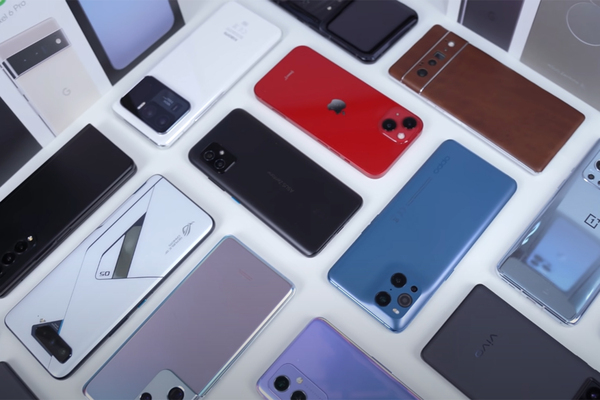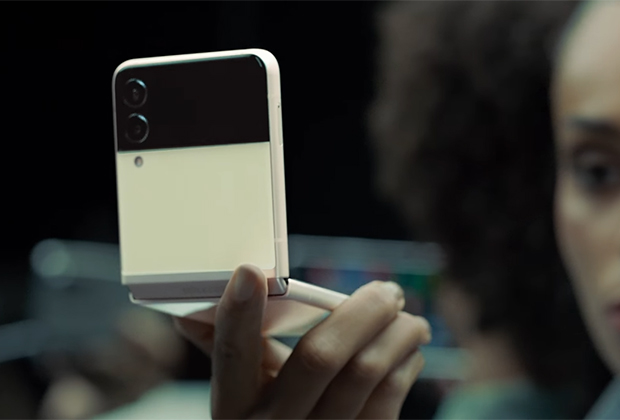
In 2021, the smartphone and mobile technology industry was experiencing the effects of the pandemic crisis and trying to release new gadgets. The leading manufacturers retained their positions, and some even opened new niches for themselves. In this article we will talk about the main trends in the smartphone segment, the sluggish development of 5G, the prospects for foldable phones and stagnation in Apple.
Building capacity
The year 2021 will be remembered again for the buildup in smartphone capacity. Even mid-range devices now have top-end features — a multi-core processor, at least six gigabytes of RAM, from 128 gigabytes of built-in storage. Gadget manufacturers can no longer stop, although such high power provided by hardware, the consumer does not need. For example, the leader of the current AnTuTu ranking — Xiaomi Black Shark 4S Pro — has a flagship chip Snapdragon 888+, 16 gigabytes of RAM and 512 gigabytes of internal memory. The model is aimed at gamers, but adequately cope with modern games can the device, which is even two or three times weaker than the superflagship.
Foldable smartphones

In the segment of foldable smartphones, almost nothing has changed in a whole year. The stagnation in the industry is due both to Samsung’s leadership position and acute component shortages. Leading smartphone manufacturers are still wary of the bendable-screen phone segment, not taking these futuristic devices seriously — apparently, neither are consumers. In 2021, Samsung continued to release a series of foldable flagship Fold and the Flip clamshell. The corporation also made good money on devices with flexible displays and retained the first place in the smartphone market. According to Statista, the Korean company gained 20.8 percent share in the third quarter, ahead of Apple and Xiaomi with 15.2 percent and 13.4 percent, respectively. The manufacturer has held the top spot for the past 10 years.
While folding device shipments aren’t great yet, some smartphone makers are no longer able to invest in the growing industry. In 2021, only Samsung shined — the releases of devices from other brands were left out. According to rumors, Google wanted to open a new segment for itself, but refused because of the great competition. The company was also afraid of the growing interest in foldable devices in China and the activity of local manufacturers — Huawei, Xiaomi and Oppo.
Apparently, Samsung and Chinese companies will fight for the market in the future. Apple, which rarely experiments with the form factor of smartphones (devices with a large diagonal appeared in its lineup only in 2014), according to rumors, is in no hurry to create its folding device. The company is working in this direction, but will not hit the market until two or three years later. For Americans, there is a risk that by this time the offer will be oversaturated and will have to make its way to the consumer. For example, as it was in the case of smart speakers: with the release of its device, Apple is late and so far has a purely symbolic share in the smart speaker segment.
Apple with no revolution
One of the main events of the industry this year was traditionally the presentation of Apple. In 2020 the company suffered from a pandemic and released the iPhone with a delay. This year the IT-giant took into account production delays in advance and showed new devices on time. However, the shortage of components still affected Apple: for the first time in 10 years, partners of Tim Cook’s corporation did not start additional production of iPhones to meet the pre-New Year’s demand.
The release of Apple’s flagship 2021 models left a double impression. On the one hand, the new smartphones were not much better than last year’s devices: top models got a screen with a frequency up to 120 hertz, new camera modes and slightly increased battery life. On the other hand, the company did not raise prices – even in Russia the minimum cost of the devices remained at the same level.
The new generation is more correctly called iPhone 12s, not iPhone 13 — engineers have worked on bugs and added features that could be added with a software update. Not counting the fact that Apple finally made 128 gigabytes the base storage size — 64 gigabytes was categorically insufficient to hold the necessary applications, music and photos and videos.
That’s probably going to be the case in 2022 and 2023, too. Especially since there will be several major changes at the company in the coming decade. First, Tim Cook, who took over Apple from Steve Jobs 10 years ago, is set to step down as CEO. Second, the company will enter the car market, but no one knows exactly in what capacity yet. Thirdly, in a couple of years, it is very likely that a new device — a mixed reality (VR / AR) headset — will be released. This will be a completely innovative gadget in the segment of consumer electronics. Some analysts already believe that the MR headset will replace the smartphone. And if so, what’s the point of releasing a strong generation of iPhones every year?
5G

If it were not for the pandemic, the 5G standard would already be widespread in most developed countries of the world – this is the opinion of most analysts. For now, fifth-generation communications exist either in a pilot format or work only in the world’s major metropolitan areas. Communications service providers and research labs are already studying the 6G standard, which is expected to emerge after 2030. Juniper Research estimates that 5G-compatible devices will account for half of smartphone sales by 2025.
In 2021, smartphones with 5G support are no longer expensive. Now the new standard is found in many affordable devices costing $300-500. In the budget segment of gadgets there are 5G models of almost all brands involved in the production of phones. A separate topic is Apple. The company first introduced devices that support the new standard in the fall of 2020, and now these models have fallen in price and become available to a large number of users of the American IT giant’s ecosystem. Also the spread of the new technology has contributed to keeping the price of the iPhone 13 at the level of last year’s flagships.




